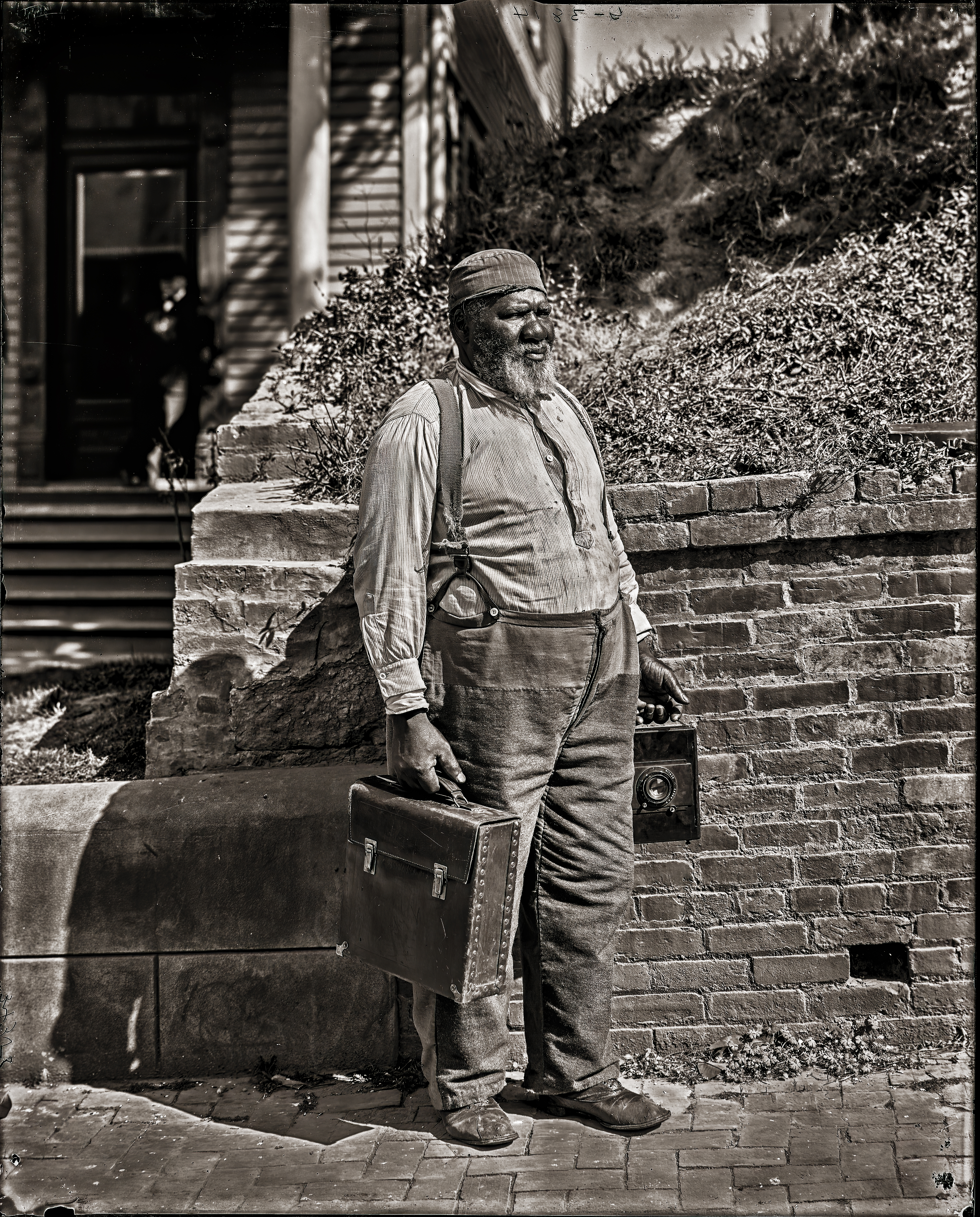The carrying case in the man’s right hand would have held 8-by-10-inch glass plates for the camera in his left hand. The camera would have been a serious professional instrument; its lens is marked with the brand of an important German manufacturer, C. P. Goerz. And the portrait of the man is the work of an artist who understood how much his instrument was capable of. In the foreground, his feet planted on the earth and his massive hands grasping the instruments, is the subject who forms the composition’s human center. Though the equipment he holds is expensive, he is dressed in rags. He is black. In the background, off center and out of focus, ostensibly only a detail, a white man leans with casually crossed legs against a door frame.
That man is out of the sun. He isn’t mentioned in the caption that was composed for the glass negative’s paper jacket some time between the turn of the twentieth century when the image was made and the middle of the century when it was cataloged by the Library of Congress, but for the author of the caption that detail wasn’t necessary. The object before him as he wrote it up for posterity was a work of art, having effect over us who have become posterity only so long as we care to pretend we are bounded within its 8-by-10-inch image frame. There, within, the black man holds his sway under rules of visual composition and a let’s-pretend acceptance of the continuing existence of the historical present. Anywhere else, of course, he is non-existent. He was once a form becoming itself amid a manifold of histories, but at any spatial or temporal point recorded there he has always been imperceptible. The names of the photographer who took the picture and the librarian who may have written the caption appear to be lost to history, but they once had at least the potential of being known to the record in full human detail, as if they were the knowable, lovable characters of a novel. Not so, though, the man in the picture.
The caption tells us that. It reads, “Negro, the photographer’s assistant.”
If it had been written as “The photographer’s Negro assistant,” it would have identified the man by his profession and a personal trait. If it had been written as “Gordon Parks, the photographer’s assistant,” it would have given him a name and the possibility of an imagined life. But “Negro,” just the undifferentiated common noun, has a uniquely zero significance. As Bloomsbury afternoons drew to their end, Virginia Woolf would, we are told, sometimes laugh to Clive, Lytton, Maynard, Vanessa, and E.M., “I must go home and feed the Jew.” That substitution for “Leonard” or “my husband” identifies its subject as a singular member of a class. It scorns to individualize him with a name, but it does identify him by a trait that its speaker considers worth being aware of. But “Negro,” without the definite article, is traitless. It has no definition, and its etymology is only a spectral name: black.
It will do no good for you to look at the black, because you won’t be able to see in. But look anyway. You won’t learn the proper name of what you see on its surface; you won’t even learn to call it, with anything like Virginia Woolf’s native fluency, “the Negro.”

But what will loom into the image frame is a black face, and that will turn out to be a caption in itself. Communicating the possibility of undying form, it will tell you: “I live because I have become the blackness that is my name. I am Negro, the photograph.”